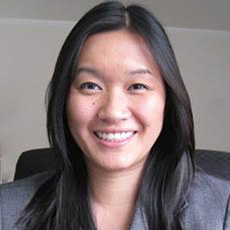As college students decide whether or not to pursue careers in science, a sense of belonging makes a critical difference.
To that end, faculty who behave “communally,” as opposed to “independently,” will have better success directing their students into fields associated with science, technology, engineering and math (STEM), according to new research led by University of Utah social psychologists. Communal behaviors are defined as behaviors focused on other people, often involving building and maintaining social relationships. Independent behaviors are actions taken alone or focused on the self.
“What I would like to say is, ‘Faculty, your behaviors matter. Students are watching you and based on your behaviors, deciding whether your field is right for them,’” said Jacqueline Chen, an associate professor of psychology. “Faculty can help students feel like they belong by making visible the communal behaviors that they engage in, and letting students know they’re there to support them.”

Jacqueline Chen
Download Full-Res ImageSupported by a grant from the National Science Foundation, her findings have been published in the journal Social Psychological and Personality Science.
“Faculty are important figures who can confer a myriad of benefits for students’ educational paths,” the study states, citing May-Britt Moser, a Norwegian neuroscientist who garnered a Nobel Prize in 2014 for her discoveries into the cellular basis for cognitive function. “Faculty might be especially important for science, technology, engineering and mathematics (STEM) fields by reducing barriers to recruitment and retention and increasing students’ likelihood of engaging in STEM.”
The research was conducted with the help of two of Chen’s graduate students, who have moved on to tenure-track faculty appointments elsewhere, and colleagues from the University of California, Santa Barbara, Indiana University and the College and University Professional Association for Human Resources.
“The biggest take-home message was really this aspect of role-specific support; that faculty, when they exhibit these behaviors that can indicate and convey to students that they’re providing them this specialized support in order to succeed in their role, that is going to increase things like self-efficacy,” said co-author Jasmine Norman, now a professor at University of North Carolina, Wilmington. “When faculty were exhibiting these supportive behaviors, students felt like they would belong in that research lab and wanted to join that research lab to a higher extent.”
The other U co-author, Danielle Geerling, now teaches at St. Norbert College in Wisconsin.
Society is investing heavily in training tomorrow’s engineers and scientists, but too many college graduates are forgoing majors and careers in STEM fields. Chen’s research aims to support ways to keep the pipeline to these careers full of promising talent.
“Even students who come into college with a lot of the prerequisites completed, like calculus, may leave STEM fields. They may decide to go into other disciplines, and this is a problem because it’s disproportionately women and underrepresented racial minorities who are leaving STEM, or some would say being pushed out of STEM,” said Chen, who heads the U’s Social Cognition & Intergroup Perception Lab. “This is both a problem economically because STEM fields really fuel our country’s economy and a problem for our values because we want equal opportunity and access for all.”
Her new research drew from four separate studies, employing both experimental and prospective methods gauging volunteer subjects’ responses to varying lab experiences. Hundreds of college and graduate students were recruited through an online platform to participate in the experiments where they read a description of a chemical engineering lab under a respected professor and imagined working in it as a research assistant (RA). The student volunteers recorded their responses in an online survey and had no interaction with the researchers.
In the first two studies, the lab scenarios featured either communal or independent conditions. In the communal condition, the professor actively collaborated with other researchers and displayed prosocial behaviors, such as presenting findings at local schools and providing feedback to other researchers. In the other scenarios, the professor displayed independent behaviors, such as contacting RAs via intermediaries and passively listening to others’ presentations without providing feedback.
“Communal behaviors don’t mean that you’re necessarily really friendly and warm,” Chen said. “Our findings are independent of students’ ratings of how friendly professors are. When students are looking for RA positions or majors, they’re trying to fulfill their own goals and they’re looking for mentors or people who can help them achieve those goals. And that willingness to help is different from just being friendly or a nice person.”
The study noted that the idea of communality may not fit well with academic culture, which often prioritizes independence in evaluating faculty for tenure.
Prior research shows women in science are asked to do more with regards to service and students expect women faculty to be more warm and responsive than their male counterparts, according to Norman.
“Part of that, which we didn’t quite get into, is in the different academic cultures, do we incentivize service?” Norman said. “From a structural perspective, when you go through tenure processes for professors, you have research, teaching and service. It’s not always clear where mentorship falls on that, especially within research labs. It’s things like this that are falling by the wayside to prioritize others, that can have implications for what the future generations of STEM look like.”
The full study, titled “To Pursue or Not to Pursue STEM? Faculty Behavior Enhances Student Involvement in STEM Roles by Signaling Role-Specific Support,” can be found here.
MEDIA & PR CONTACTS
-
Brian Maffly
Science writer, University of Utah Communications
801-573-2382 brian.maffly@utah.edu
